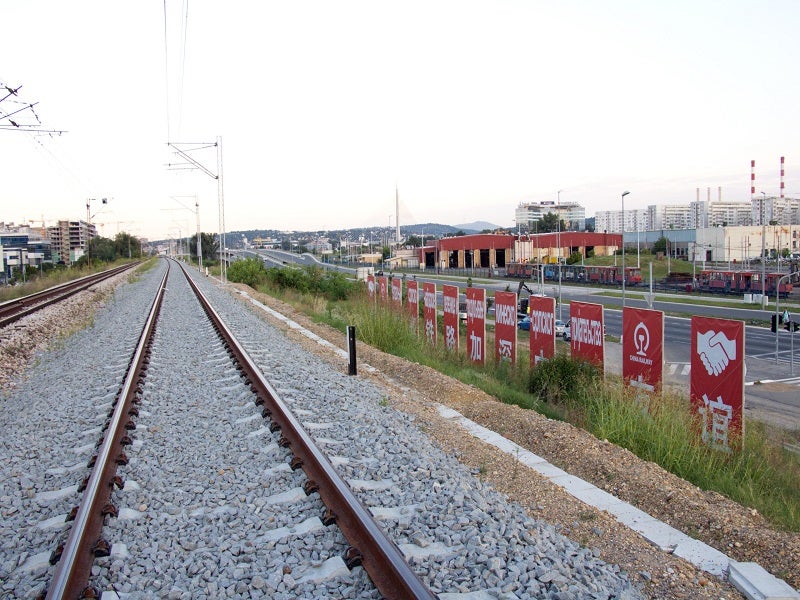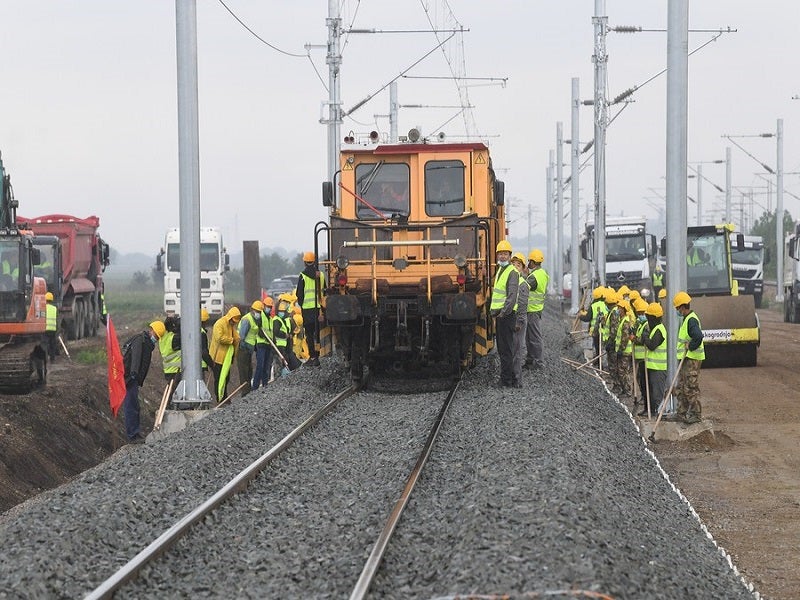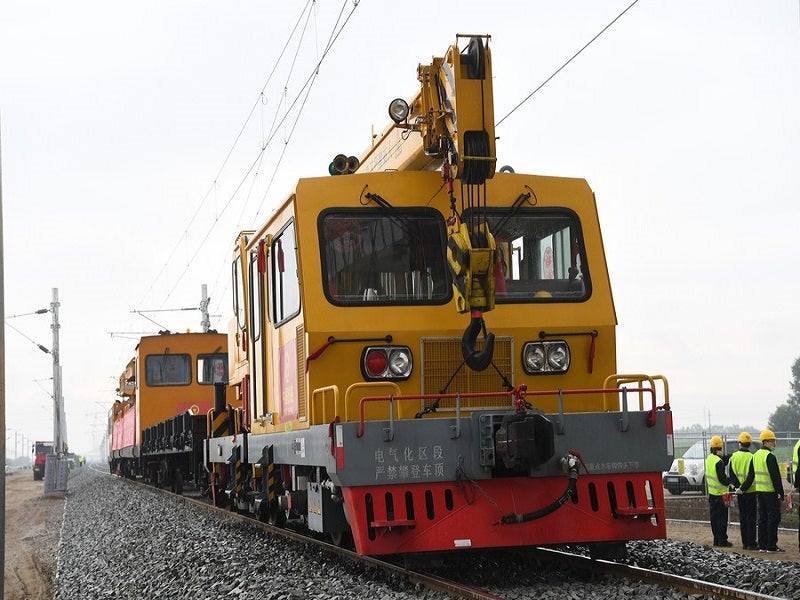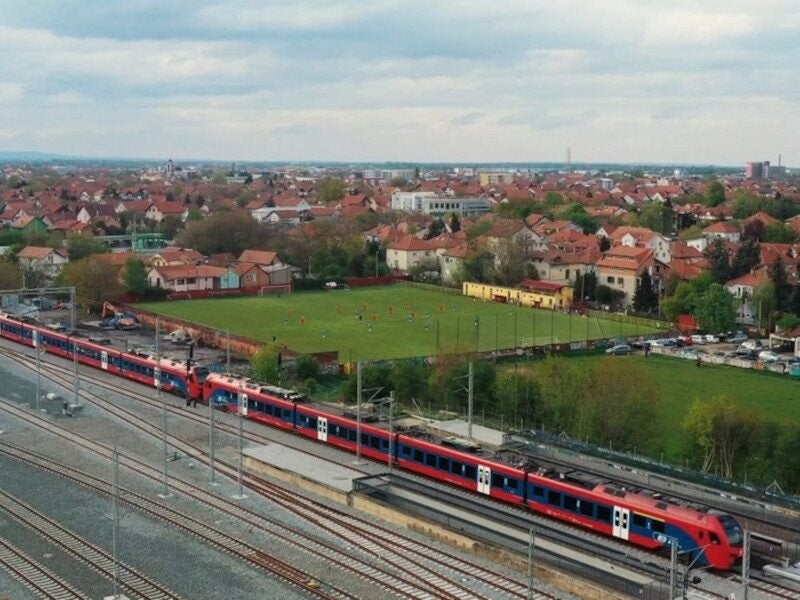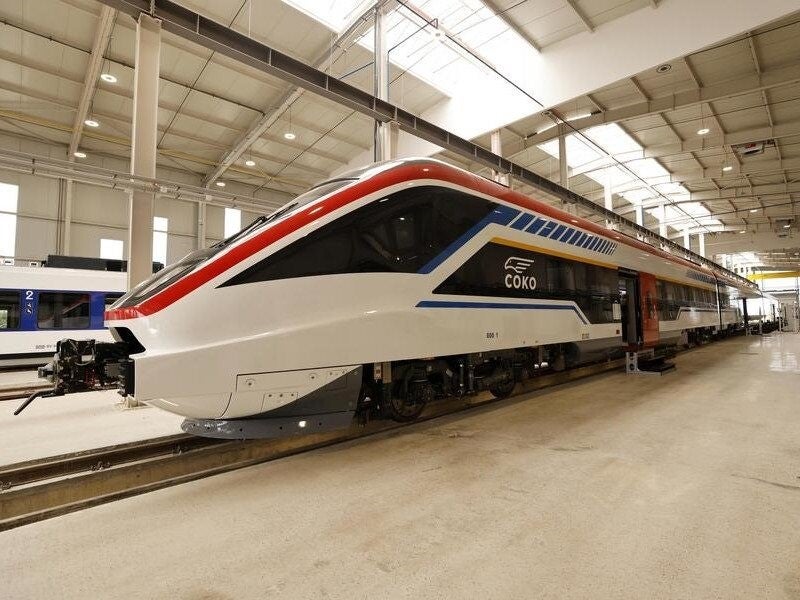The outdated Budapest-Belgrade railway is being modernised to improve the connectivity between Hungary and Serbia. The cross-border railway line is being upgraded to European standards.
The modernisation project will deliver a 350km-long double-track electrified high-speed railway network and enhance passenger services.
It will cut the travel time between Belgrade and Budapest down to just two hours and 40 minutes, a significant reduction from the current eight-hour journey.
Furthermore, the upgrade will facilitate the quick transportation of Chinese products between Greek ports and Western Europe. It is also expected to transform Hungary into a regional logistics hub.
The tracks on the section connecting the Serbian cities of Novi Sad and Subotica were successfully joined in Backa Topola, Serbia, in April 2024.
The construction of the Serbian segment of the Belgrade-Budapest railway line is scheduled for completion by the end of 2024 while the Hungary section of the project is still under construction.
The modernisation project is expected to be completed in 2025.
Project background of the Budapest-Belgrade railway
China, Hungary and Serbia reached an agreement for the construction of the Belgrade-Budapest high-speed railway project at the summit of the ‘16+1 initiative’ in Belgrade in December 2014.
The ‘16+1’ group, consisting of 16 Central and Eastern European (CEE) countries and China, focuses on enhancing cooperation in the fields of economy, culture and infrastructure.
Budapest-Belgrade railway project details
The project involves the construction of new tracks and reconstruction of existing tracks along the route. Approximately 166km of the railway is located in Hungary while the remaining 184km is in Serbia. The dual-purpose railway transports both passengers and freight between the capitals of Serbia and Hungary.
The Serbian side of the railway link includes three sections: the 34.5km Belgrade-Stara Pazova, the 40.4km Stara Pazova-Novi Sad, and the 107.4km Novi Sad-Subotica-state border sections.
The line will have a design speed of 200km/h, whereas the trains on the route will operate at a speed of 160km/h.
Construction details of the Budapest-Belgrade railway
The modernisation of the rail link includes the construction of a new second track to create a double-track line for transporting passengers and cargo, alongside the reconstruction of the existing single-track line.
The construction of the Serbian section of the project commenced in 2018. The 34.5km long Belgrade-Stara Pazova section was opened for service in March 2021.
The Belgrade-Stara Pazova section involved modifications to the railway alignment, stations, and station amenities. Furthermore, it included the construction of grade-separated rail/road crossings, as well as lineside infrastructure such as bridges, overpasses and underpasses.
The section was installed with modern signalling-interlocking systems and telecommunication systems to enable quick transmission of information to the locomotive cab, ensuring safe and efficient transportation.
Approximately 27km of new tracks were laid, 84km of tracks were reconstructed and 150 switches were replaced. The section was upgraded to the European Train Control System (ETCS) Level 2.
The foundation stone for the construction of the Hungarian section was laid in October 2021.
The 75km section between Belgrade and Novi Sad in Serbia has been operational since March 2022
with 6.83 million passengers using it over the past two years.
Rolling stock
Serbia ordered five trains from China Railway Rolling Stock for the Serbian section of the railway line. The first new train was unveiled in June 2024.
The new train has 250 seats and can reach speeds of up to 200km/h. It features intelligent diagnostics and maintenance systems. In addition, the train includes wheelchair spaces, accessible toilets, and storage for bicycles and large luggage.
Financing of the rail link
The project is funded by the Chinese Government. The Hungarian Government secured a $2.1bn loan from China, which represents approximately 85% of the investment required for the Hungary section of the project, in 2020.
Serbia also reached a $297m loan arrangement with the Export-Import Bank of China. The total cost of the 184km-long Serbian section is approximately $2bn. The remaining investment in the project is arranged by the governments of Serbia and Hungary to complete the respective sections.
Contractors involved
The Belgrade Centre-Stara Pazova section of the high-speed railway line was constructed by the consortium of China Railway International (CRI) and China Communication Construction Company (CCCC).
The Belgrade Centre-Stara Pazova section was designed by the Institute of Transportation CIP, a Serbia-based design and engineering company.
A joint venture (JV) comprising the German company DB Engineering & Consulting, Utiber, and Cestra was contracted to supervise the modernisation and renovation of the Belgrade-Stara Pazova section.
DB Engineering & Consulting was also contracted to serve as a technical consultant for the reconstruction and upgrade of the Stara Pazova-Novi Sad section. China Railway Design Corporation (CRDC) provided the design for the Novi Sad-Subotica section while the CRI-CCCC consortium was contracted for the construction of the section.
German engineering services company Peri provided construction support for the Cortanovci viaduct on the Stara Pazova-Novi Sad section.
International transportation and logistics company AsstrA received a contract to provide transit and customs documentation services for the transportation of containers for the construction project.
CRE Consortium, a consortium of Chinese and Hungarian companies, was awarded the $2.07bn construction contract for the Hungarian section of the line between Budapest and Belgrade in 2019. The consortium comprises Hungarian manufacturing company Opus Global’s subsidiary RM International, China Tiejiuju Engineering & Construction, and China Railway Electrification Engineering Group.
Egis, a consulting, construction engineering and operating firm, is responsible for the design review and construction supervision of the section between Novi Sad and the Hungarian border.
Frauscher, a sensor technology provider, supplied Advanced Counter FAdC® axle counters for the project.

